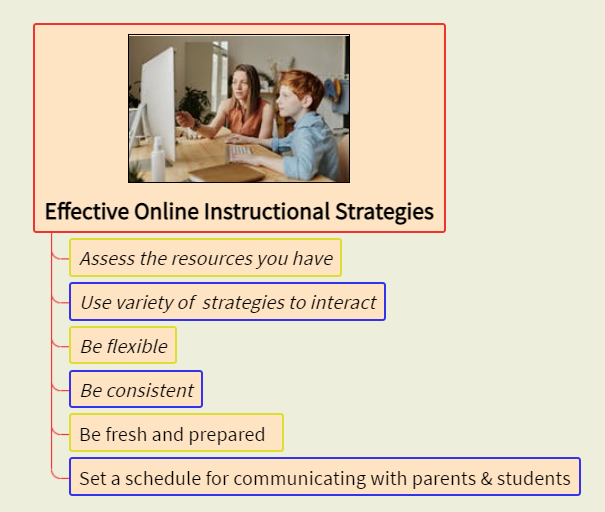Effective Online Instructional Strategies

Online instruction requires a different focus than in-class instruction. How can educators make this process smoother for students, parents, and themselves? Follow these five steps to simplify the process while not sacrificing high-quality instruction!
Assess What Resources You Have
In planning a distance learning curriculum or online content to pair with a hybrid learning model, the first step is to look at the options. What resources are available that students can use to reinforce content? What resources are available to introduce new content? Once available resources have been assessed, it is time to look for additional tools that can be used for supplements. There are many free resources that can be used as supplemental tools to guide and assess learning. Find what works for you and your students. Sometimes a resource may prove to be the perfect one; other times, it fails and you are back to the drawing board. This process will get easier as you move into the academic year.
Use a Variety of Instructional Strategies
Similar to in-class instruction, one size does not fit all during online instruction either. Find a way to make learning come alive using virtual “hands-on learning activities”. Also, utilizing a platform that allows for group instruction is extremely beneficial and helps students stay connected to each other and their teachers. Self-assessments, virtual word walls, and thematic instruction are also beneficial to guide students’ learning. Depending on the students’ ages, an interactive notebook can be a great way to keep students organized. The interactive notebook can also be a supplemental resource for students to visit during times of uncertainty.
Be Consistent
Everyone needs to sense order and routine, even during a time when school lacks the traditionally structured routine. Find a way to make assignments, content presentations, and feedback consistent. Film teaching ahead of schedule so students can have access to it first thing in the morning, or if you are using a live video platform, maintain a schedule to assist parents and students in being prepared.
Be Flexible
For many educators, teaching online is new. Other teachers may have taken years to figure out how to transition to a paperless classroom, but those teachers are also struggling since they are used to having their students in class with them. Find what works for you. The task won’t be seamless or easy, but be transparent in letting parents know that you are working hard to facilitate their child’s learning and academic progress. When you do have to change a process, explain why, if possible. These explanations create a bridge between being consistent and being flexible.
Take Care of You!
Students and parents may have more questions than ever before, and, while it is important to answer those questions, it is also important to not be ‘on call’ twenty-four hours per day. Set a schedule and method for communicating with parents and students. Try to follow that schedule for your own well-being, so you can be fresh and prepared for the strenuous task of educating students using this innovative approach.





Pingback: The 6 Characteristics of Fluency | Lumos Learning